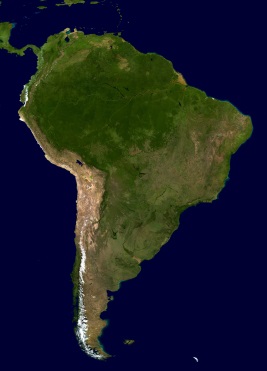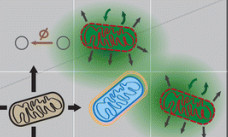
Where have all the mosquito nets gone?
 Bed nets may only be one part of wider malaria elimination programmes by governments in endemic areas, but they can be effective.
Bed nets may only be one part of wider malaria elimination programmes by governments in endemic areas, but they can be effective.
However, spatial modelling by Emily S. Acheson and colleagues has shown that whilst country-wide efforts to distribute malaria nets has reduced the impact of malaria in Tanzania, there are unexpected gaps and variations in net ownership in highly endemic areas – effectively limiting malaria control programmes in these high risk areas.
Food in a future of 10 billion
A Review published in Agriculture & Food Security looks at the impact of a rising population on food production, particularly in a changing climate. A former adviser to the US Secretary of State says that genetic modification (GM) is the most critical technology in agriculture for meeting the challenges of feeding a growing global population.
Looking at the current climate of distrust towards GM food, and the scientific body of proof saying otherwise, she highlights the specific challenges we will face as we near 10 billion humans on the planet.
Climate change and malaria in South America
 Climate change may affect the distribution of malaria and in South America, where this disease remains a significant public health issue, this could impact the number of people being infected.
Climate change may affect the distribution of malaria and in South America, where this disease remains a significant public health issue, this could impact the number of people being infected.
Gabriel Zorello Laporta and colleagues predict that climate and landscape effects will result in members of the Albitarsis Complex becoming more important malaria transmitters in South America by 2070.
The actinin family proteins: biological function and clinical implications
 The alpha actinin (ACTN) family proteins are actin-binding proteins that regulate cytokinesis, cell adhesion, spreading, migration and signaling to control cell function.
The alpha actinin (ACTN) family proteins are actin-binding proteins that regulate cytokinesis, cell adhesion, spreading, migration and signaling to control cell function.
The intent of this thematic series, guest edited by Dr. Hung-Ying Kao, is to summarize recent discoveries on actinin function and ACTN-related diseases and highlight future challenges in ACTN research.
The role of stripe orientation in target capture success
 Why do zebras have stripes? For many years the prevailing theory has been that they offer a measure of protection by blending into the surrounding environment.
Why do zebras have stripes? For many years the prevailing theory has been that they offer a measure of protection by blending into the surrounding environment.
However new research suggests that they are easier to spot with horizontal stripes. The lead author, Anna Hughes, explains the findings in further detail in a blog.
Bnip3 and apoptosis in mitochondria

Sehyo Choe and colleagues employ a systems biology approach to explore the cellular cross talk between mitophagy and apoptosis mediated by the Bnip3 protein within mitochondria.
Using mathematical modelling of mitochondrial populations the authors show that the level of proteins such as Bnip3 which crosstalk between two pathways can impact the individual mitochondrial response to stress and apoptosis signaling.
The authors identify mechanisms and conditions that alter mitophagy decision within mitochondria that ultimately result in apoptosis. Their model provides a basis to understand how cellular signaling and subcellular heterogeneity of proteins can influence signaling at the individual organelle level.
Sophie Marchant
Latest posts by Sophie Marchant (see all)
- Happy Easter! Enjoy the sound (and taste) of your chocolate! - 23rd March 2016
- Quiz: Aiming to make rare diseases common knowledge - 29th February 2016
- Quiz: The big end of year On Biology bumper quiz - 23rd December 2015
Comments